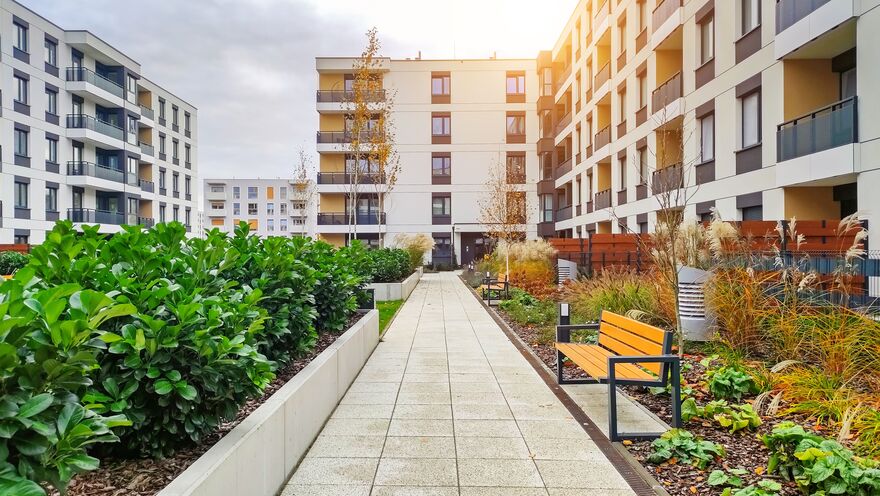In June, the government published the Hazards in Social Housing (Prescribed Requirements) (England) Regulations 2025, also known as Awaab’s Law. The Regulations were introduced following the tragic death of two-year-old Awaab Ishak in December 2020, who suffered from a severe respiratory condition due to prolonged exposure to mould in his home.
Phase one of the Regulations came into force on 27 October 2025 and requires social housing landlords to address all emergency hazards as well as damp and mould hazards that present a significant risk of harm to tenants within fixed timeframes. Further categories of hazards presenting a significant risk of harm will be brought into scope of the Regulations in two further phases planned for 2026 and 2027.
Who does this apply to?
Awaab’s Law will apply to almost all social housing occupied under a tenancy (including temporary and supported accommodation) let by a registered provider. The Regulations do not apply to social housing let under licence or long-leasehold or owner-occupied accommodation.
The Requirements
Social landlords must:
- Investigate potential emergency hazards (those posing an imminent and significant risk of harm to the tenant) immediately and, if confirmed, undertake relevant safety work as soon as reasonably practicable, both within 24 hours of becoming aware of them.
- Investigate any potential significant hazards within 10 working days of becoming aware of them.
- Produce a written summary of investigation findings and provide this to the tenant within 3 working days of the conclusion of the investigation.
- Carry out relevant safety work within 5 working days of the investigation concluding, if a significant hazard is identified.
- Begin or take steps to begin, any supplementary preventative works in relation to a significant hazard within 5 working days of the investigation concluding. If steps cannot be taken to begin work in 5 working days this must be done as soon as possible, and work must be physically started within 12 weeks.
- Complete preventative works satisfactorily within a reasonable time period.
- Secure suitable alternative accommodation for the household, at the social landlord’s expense, if relevant safety work cannot be completed within specified timeframes.
- Keep tenants updated throughout the process and provide information on how to keep safe.
This means that to assess whether a hazard poses an emergency or significant risk, social landlords will need to obtain and hold information about their tenants including any issues that may make them more susceptible to harm or more vulnerable to specific hazards. Social housing providers should now have established processes in place for recording and responding to reports of emergency hazards or damp and mould issues.
To help social housing providers comply with the Regulations and to support its implementation, the government has published non-statutory guidance. See Awaab’s Law: Guidance for social landlords - Timeframes for repairs in the social rented sector - GOV.UK
Enforcement
The effect of Awaab’s law is to imply terms into social tenancy agreements within scope, requiring the landlord to meet the timescales and requirements prescribed by the Regulations. If they fail to meet those requirements, the tenant will have a right to bring an action for breach of contract and seek an order from the court for repairs, compensation for loss suffered, and damages. While tenants are encouraged to resolve any concerns through the social landlord’s complaint procedure in the first instance, they can also refer matters to the Housing Ombudsman if not adequately resolved.
Is there a Defence?
Social landlords may have a defence to legal action under the Regulations if they have taken all reasonable steps to comply with the requirements but have been unable to comply for reasons beyond their control.
Next steps
The second stage of implementation in 2026 will extend Awaab’s Law requirements to apply to a wider range of hazards (referred to within the Housing Health and Safety Rating System – the “HHSRS”). This is anticipated to bring significant risks arising from excess cold or excess heat; falls; structural collapse; fire, electrical issues, explosions, and hygiene within the fixed timescales for repair. The requirements of Awaab’s Law will expand to cover the remaining HHSRS hazards, except overcrowding, in 2027.
It is also worth noting that the Renter’s Rights Bill has passed the final stage of its legislative passage through the House of Commons and will receive Royal Assent imminently. The Renter’s Rights Act (as it will become) is expected to be in force by mid-2026 and will extend the requirements of Awaab’s Law to the private rental sector.
If you require further information or advice on compliance with Awaab’s Law, please contact our Regulatory team here.
The information on this site about legal matters is provided as a general guide only. Although we try to ensure that all of the information on this site is accurate and up to date, this cannot be guaranteed. The information on this site should not be relied upon or construed as constituting legal advice and Howes Percival LLP disclaims liability in relation to its use. You should seek appropriate legal advice before taking or refraining from taking any action.

